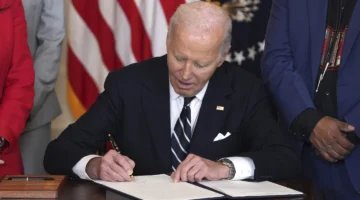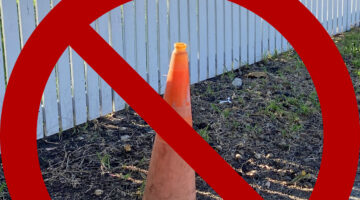What’s next for ‘Mount Trashmore?’
BY PRU SOWERS
KONK LIFE STAFF WRITER
Although “looming over Key West” is a bit of an exaggeration, the 90-foot-high municipal landfill on Stock Island, aka Mount Trashmore, does rise above this sea level community. But concerns about possible pollution from the landfill, which closed in 1992, have been getting higher.
The Key West City Commission directed the city Sustainability Advisory Board (SAB) at the beginning of the year to undertake an examination of the landfill focusing on safety and environmental concerns. The SAB was also asked to recommend possible future uses of the 16-acre landfill site. That report, which found no harmful gas or leakage from the approximately 90-year-old landfill, will be the subject of discussion at the Sept. 17 city commission meeting.
Despite the all-clear SAB report, there are still some concerns. Commissioner Sam Kaufman, who sponsored the original resolution asking the SAB to work with the city Utilities Department to look at possible safety concerns, is not happy that it appears no independent landfill experts were consulted during the examination.
“Many of us were expecting an independent report, not one from city management to confirm the safety of the landfill,” Kaufman wrote in a July 11 letter to SAB Chairwoman Monica Haskell. “This does not appear to be an independent study and report and much of the two-page report is repetition of previous reports already made by city management in the previous one to two years.”
A routine compliance inspection of Mount Trashmore was conducted on April 24 by the state Department of Environmental Protection (FDEP). It found multiple, relatively minor “areas of concern,” including deficiencies in how the landfill stormwater management system was being maintained, caused primarily by the storage of 30 city-owned vehicles at the site; unlocked ground water monitoring wells; unfilled holes caused by iguana digging, which could tear the 30-millimeter PVC membrane protecting the landfill; and some low points on the hill “that could retain stormwater and accelerate erosion.” Those could easily be corrected by re-grading the low areas and stabilizing with planted vegetation, the FDEP report said.
“No causes for alarm have been found at the landfill, verified by reports and conversations with both the FDEP and EPA [federal Environmental Protection Agency],” wrote Alison Higgins, Key West Sustainability Coordinator, in a June 7 letter to the SAB.
Seven of the 32 gas vents on the landfill hill show measurable levels of potentially harmful gases, including methane and hydrogen sulfide. But those gases were only detectable inside the vents themselves and only for a few hours a day. No measurable amount of the two gases could be found one foot downwind from the vents, Higgins said.
“Landfill gas peaks roughly five to seven years after burial but can produce residual amounts of gas for 30 to 50 years. It has been [approximately] 32 years since biodegradable garbage was last buried at the Key West landfill; therefore, gas production is roughly 26 years past peak. Seventy-eight percent of the 32 gas vents no longer have measurable amounts of gas venting,” Higgins told the SAB.
Then there is the question of whether toxins from the landfill are dripping down inside the hill and into the ocean. When Mount Trashmore was created in the early 1930’s, no bottom liner was ever installed to catch any chemicals leaching downward.
“No one disputes that the landfill has no bottom liner or collection mechanism for the toxic chemical soup existing there known as ‘leachate.’ No bottom liner means that the toxic chemicals are going somewhere, correct,” asked Kaufman in his July 11 letter to the SAB.
But Higgins and the SAB were not concerned about ocean pollution coming from the landfill. They pointed out that in the past 30 years of the city reporting water and air quality sampling to the FDEP, “no corrective measures have determined to be necessary.”
“Only one parameter, Total Dissolved Solids (TDS), was found to occasionally exceed Groundwater Cleanup Target Levels. These exceedances were at Wells #2 and #3, closest to the ocean. Due to their geography, lack of any other parameter exceedances, and with the knowledge that salinity can cause higher TDS levels, the TDS exceedances were determined to not be leachate leaks,” Higgins reported to the SAB. “Staff reviewed Florida Fish & Wildlife Commission databases back to the 1997 and found no evidence of fish kills or seagrass die-offs in the area.”
If the city commission accepts the report findings, it will move on to the second part of the SAB directive, to recommend future uses for the 16-acre landfill site. So far, the SAB has concluded that removing the 90 feet of debris would be exorbitantly expensive and cause potentially harmful debris dust.
“The impact mining would have on all the residents and businesses in the area would be severe from dust and noise to exposing garbage to the elements and traffic conditions of hauling the material out of the Keys. The rough cost estimate is between $80-$180 million,” according to Higgins.
If true, that leaves limited potential for future use of Mount Trashmore.
“I look forward to considering ideas such as native plantings to create habitat for vulnerable bird and butterfly species; a solar or wind farm; an art park; active or passive recreational space; and others,” SAB Chair Haskell said.
[livemarket market_name="KONK Life LiveMarket" limit=3 category=“” show_signup=0 show_more=0]



It’s difficult to find well-informed people for this topic, however, you sound like you know what you’re talking about!
Thanks